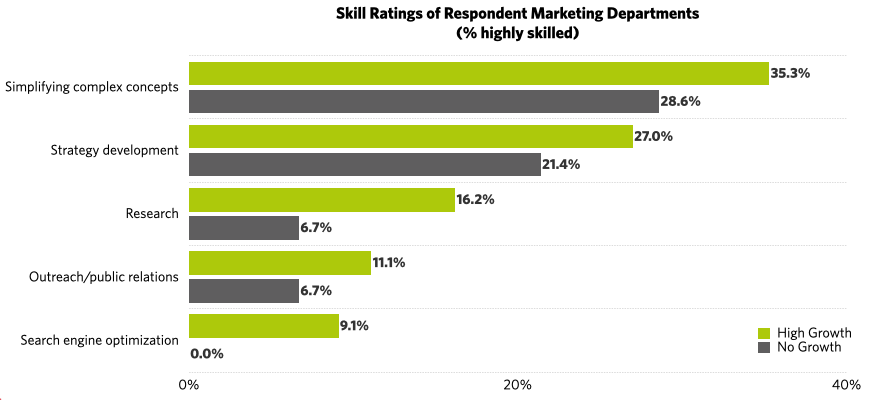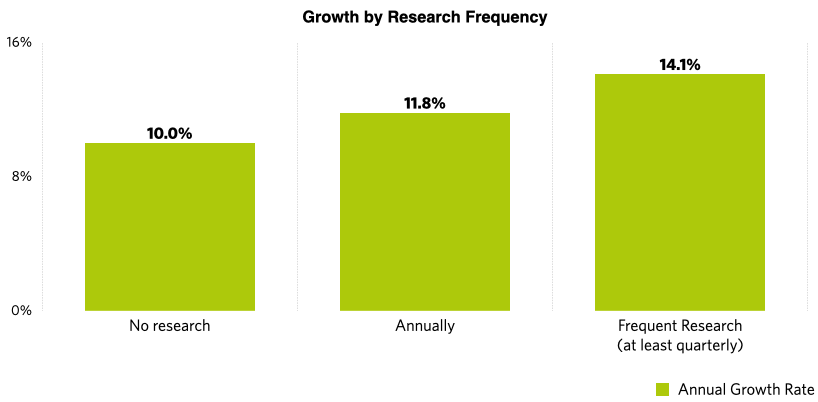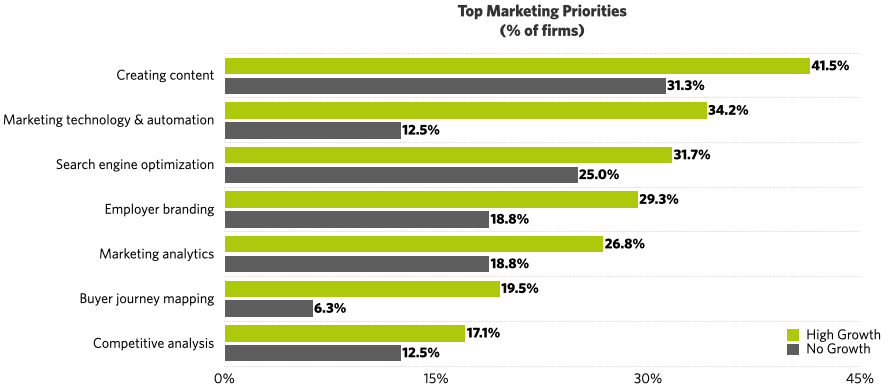The Accounting and Financial Services industry is poised for a period of rapid change that is likely to produce some clear winners and some firms that face a troubled future. That is the conclusion of the Hinge Research Institute’s newly released analysis and Executive Summary of the Accounting and Financial Services segment of their 2020 High Growth Study.
This analysis looks at over 200 firms with a combined revenue of over $15 Billion and 95,000 professionals. The analysis first overviews overall industry growth trends and puts them in a larger context of the overall professional services industry.
The report then goes on to compare the fastest growing firms with their slower growth peers. This analysis offers some clear insights into how to negotiate this dynamic and rapidly changing professional services marketplace.

Accounting and Financial Services firms lag technology and consulting industries in terms of their overall growth. At least part of the problem is how firms approach marketing and business development.
Here are some of the high-level insights that point to a better way forward.
It’s time to go digital.
There has been a long-term trend for clients to move to digital channels to research important business issues, find, and evaluate service providers. Why does it matter to you? Consider this fact.
About 90% of potential clients say they rule out some firms without even talking with them. If you have had someone say they made a referral to your firm, but the person never called, you may be experiencing this change in buyer behavior.
Accounting and Financial Services firms are also lagging behind other professional services when it comes to online lead generation and nurturing. This disparity is easy to see when you examine the prevalence of firms that generate at least two-thirds of their leads using online channels such as their website or social media. We have labeled these firms as Digital Disruptors.
When compared to all other professional services, Accounting and Financial services are less then half as likely to be Digital Disruptors and are much more likely to be laggards. It’s time to follow your clients online.
High Growth can also be highly profitable.
High Growth firms in this study grow over 3X faster than average growth firms. That’s to be expected. But growth takes investment. So, it would be reasonable to expect that High Growth firms would be less profitable.

But as it turns out, that is not true. In fact, High Growth firms are almost twice as likely to be highly profitable (25% or greater profit as a percent of gross revenue) than their average growth peers. They are also less than half as likely to be low profitability (10% or less).
The conclusion is clear. You do not need to sacrifice growth to achieve high profitability.
There is also some interesting insight into the profitability of low growth firms discussed in the Executive Summary. Some are clearly sacrificing growth to achieve profitability while others are achieving neither growth nor high profitability. That hurts.
So, what else do the High Growth firms do differently? They also have better access to relevant skills.
Find a way to access the relevant skill sets to achieve success.
High Growth firms have higher levels of critical marketing skills such as research, PR/Outreach, and Search Engine Optimization (SEO). Many of these skill sets have a very direct and obvious connection to gaining visibility in the digital realm.

Also notable is the higher skill levels in the important communication skill of simplifying complex concepts. This is one of the signature skills shared by many Visible Experts. In short, High Growth firms have superior skills when it comes to making your firms’ expertise more visible to potential clients in both the digital and traditional space.
There are three viable approaches to accessing the skills you need.
- Train your existing staff
- Hire new staff with the necessary skills
- Retain an outside resource to supplement internal resource
In reality firms often use a combination of all three approaches. Retaining outside resources for very specialized skillsets (such as SEO or overall marketing strategy) or those you only use occasionally is quite common. Skills that are needed every day are often trained or hired.
Either develop or retain the necessary skills to create and implement an effective strategic marketing approach. Poor skills deliver poor results.
Original research on your target audience returns big dividends.
The data is very clear and compelling. Firms that do regular, frequent research on their target audiences grow faster. While even occasional research accelerates growth, frequent research (at least quarterly) is associated with over 40% faster growth.

There are two primary reasons research works so well. First, in times when markets are facing rapid change and disruption, the firms that has the best, most up to date understanding of their target clients and their needs and priorities, has a very real competitive advantage.
Second, original research on a target audience is one of the most powerful forms of high value content. Firms are eager to learn of trends and research supported insights in their industries. These insights can be delivered via a wide variety of marketing channels, from social media to trade publications and webinars, making it an exceptionally convenient and effective core of a content marketing program.
In short, research not only gives you powerful insight into your target audience and the issues they care about, it also works as high-value content.
High Growth firms are looking to the future.

High Growth firms have different marketing priorities than their No Growth peers. They are much more likely to prioritize activities that support a robust content marketing program such as content creation, SEO, and marketing analytics. They also have a focus on their employer brands(their reputation as an employer) to aid in recruiting and retention of top talent.
But the areas where we observed a greater disparity is in some of the newer technologies such as marketing automation and buyer journey mapping. High Growth firms are leaning into change and exploring digital strategies to better serve their target clients as they plan for an evolving marketplace.
A Final Thought
In this time of a rapidly evolving marketplace and great uncertainty it is tempting to freeze in place and avoid making big decisions or changes to your marketing strategy. And while it may be tempting, it is undoubtedly a mistake.
In times of rapid change, it is the firms that adapt the fastest that gain a competitive advantage. The shift towards digital is well established and many firms are pulling ahead of their No Growth competitors by following their clients online and making their expertise visible. Now is the perfect time to learn from the firms that are leading the way.
How Hinge Can Help
Hinge, a global leader in professional services branding and marketing, helps firms grow faster and become more profitable. We offer a comprehensive suite of research, marketing and strategy services. Our research-based strategies are designed to be practical for firms of any size. And our groundbreaking Visible Firm program combines research, strategy, implementation, training and more.
Additional Resources
- The Hinge Research Institute has released its fifth annual High Growth Study which goes deeper than ever into understanding what drives extraordinary growth in professional services.
- Get the step-by-step training your or your team need to implement a powerful marketing plan. Join Hinge University and take your marketing expertise to a higher level.

